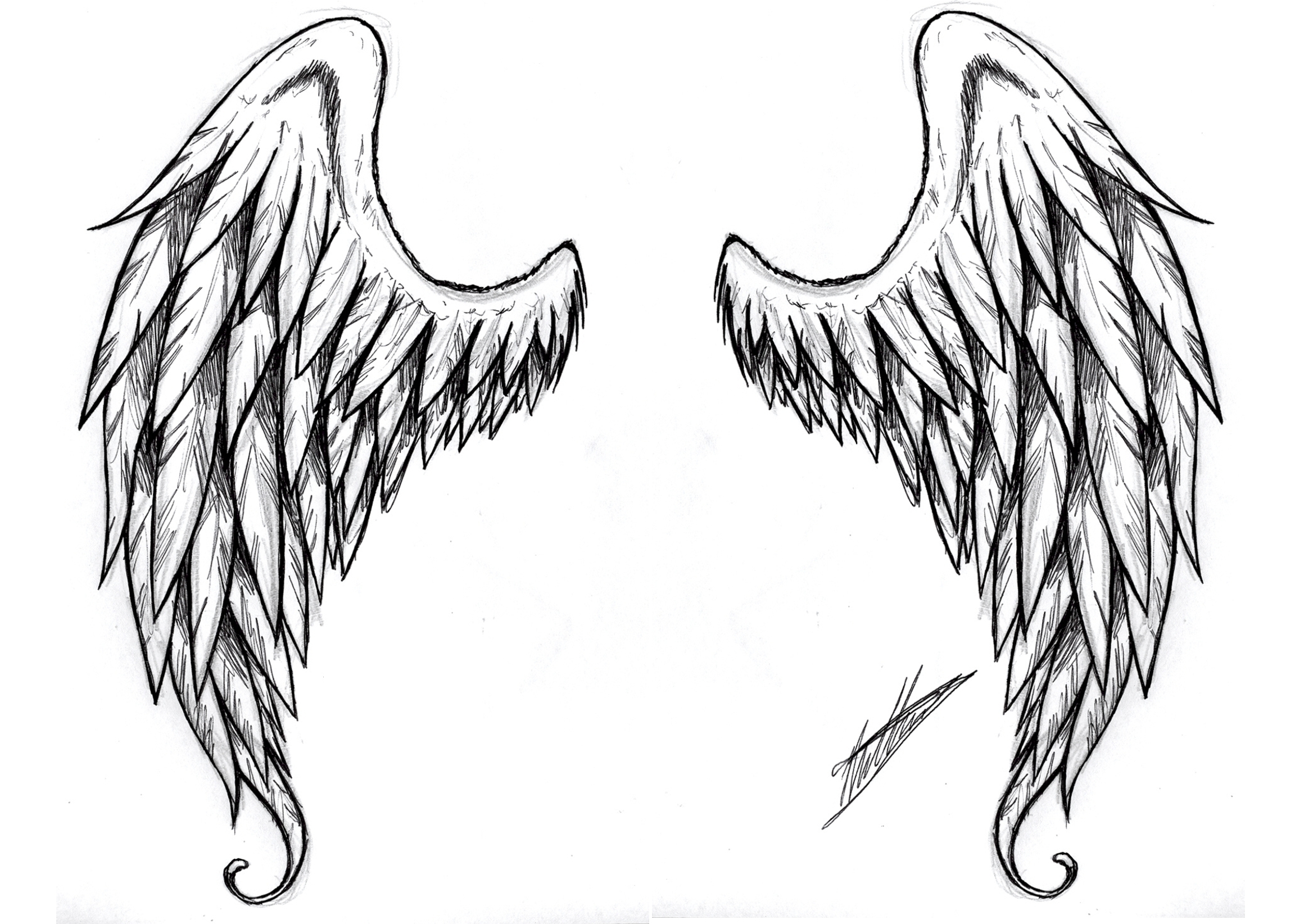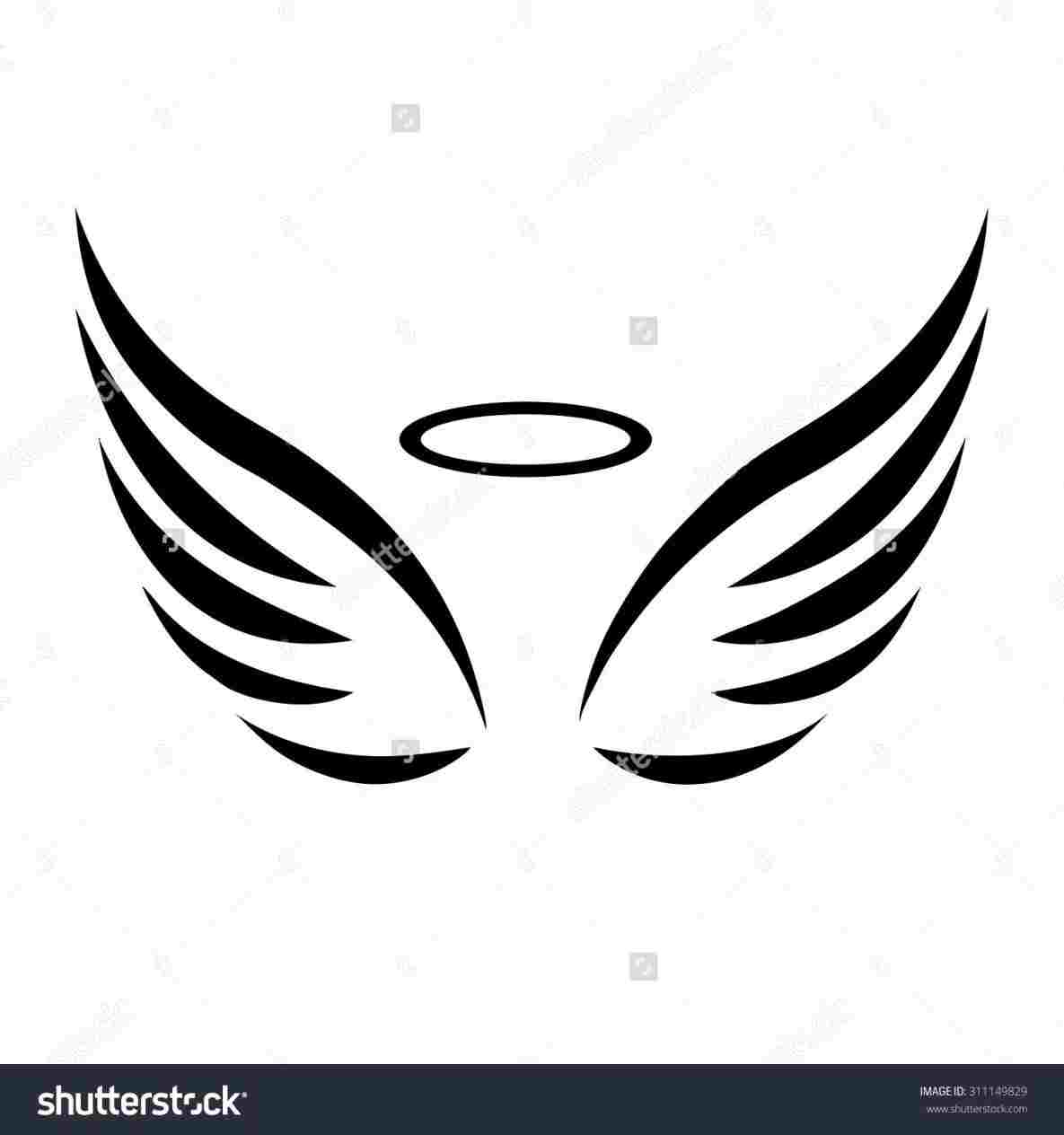Alright, listen up, folks! If you're here, chances are you're searching for a way to create stunning angel wings drawings without pulling your hair out. Let's face it, drawing angel wings can seem intimidating at first, but guess what? It doesn’t have to be. With the right tips and techniques, even beginners can create angelic masterpieces that look like they belong in a gallery. So grab your pencils, let’s dive right in, and unleash your inner artist!
Now, before we get started, let's talk about why angel wings are such a big deal. They’re not just random feathers stuck together; they’re symbols of purity, grace, and divine protection. Whether you're into fantasy art, tattoos, or just want to doodle something cool, angel wings are a timeless choice. And the best part? You don’t need to be a professional artist to pull this off. This guide is all about making it easy, fun, and achievable for everyone.
Here’s the deal: we’ll break down the process into bite-sized steps so you can follow along effortlessly. By the end of this article, you’ll not only know how to draw angel wings but also understand the anatomy behind them. So buckle up, because we’re about to take flight into the world of art!
Read also:Guy Dressed As An Eagle Meme The Ultimate Story Behind The Wings
Why Angel Wings Are So Popular in Art
Let’s be real, angel wings are everywhere—from books and movies to tattoos and clothing designs. But why are they so popular? Well, for starters, angel wings evoke a sense of mystery and wonder. They represent freedom, spirituality, and a connection to something greater than ourselves. Plus, they just look awesome! Whether you're creating art for personal enjoyment or aiming to impress others, angel wings add an element of elegance and beauty that’s hard to resist.
Historically, angel wings have been depicted in religious art for centuries. From Michelangelo’s Sistine Chapel to modern-day illustrations, these wings have evolved in style while retaining their symbolic significance. Today, they’ve become a staple in pop culture, inspiring countless artists to put their own spin on this classic motif.
Basic Anatomy of Angel Wings
Before you start drawing, it’s important to understand the basic anatomy of angel wings. Think of them as a combination of feathers arranged in layers, creating a flowing, dynamic shape. Here’s a quick breakdown:
- Primary Feathers: These are the longest and most prominent feathers, located at the outer edge of the wing.
- Secondary Feathers: These are shorter and sit closer to the body, providing structure and support.
- Tertiary Feathers: These are the smallest feathers, located near the base of the wing.
- Cover Feathers: These overlap the other feathers, adding depth and texture.
Understanding these layers will help you create more realistic and detailed wings. Don’t worry if it sounds complicated—once you start drawing, it’ll all come together naturally.
Tools You’ll Need for Easy Angel Wings Drawing
Now that you know what you’re dealing with, let’s talk about the tools you’ll need. You don’t need a fancy art studio or expensive supplies to create beautiful angel wings. Here’s a simple list:
- A good quality pencil (HB or 2B works great)
- An eraser (preferably a kneaded eraser for precision)
- A sketchbook or blank paper
- Optional: colored pencils, markers, or digital tools if you want to add color
Remember, the key is to keep it simple, especially if you're just starting out. As you gain confidence, you can experiment with different materials and techniques.
Read also:Lasjon Trader Accident What Happened And Why It Matters
Step-by-Step Guide to Drawing Angel Wings
Step 1: Start with the Basic Shape
The first step is to sketch the basic shape of the wing. Think of it as a curved, triangular form with rounded edges. This will serve as the foundation for your drawing. Don’t worry about perfection at this stage—just focus on getting the general shape right.
Step 2: Add the Feather Layers
Once you have the basic shape, it’s time to add the feather layers. Start with the primary feathers, drawing long, curved lines that follow the contour of the wing. Then add the secondary and tertiary feathers, gradually building up the layers. Remember, feathers overlap each other, so don’t be afraid to let some lines intersect.
Step 3: Refine the Details
Now it’s time to refine the details. Go over your sketch, adding texture and definition to the feathers. Pay attention to the direction and flow of the feathers, as this will give your wings a realistic look. Use light, gentle strokes to create a soft, feathery effect.
Step 4: Erase Unnecessary Lines
Once you’re happy with the details, erase any unnecessary guidelines or mistakes. This will clean up your drawing and make it look more polished. If you’re using a kneaded eraser, you can gently lift unwanted marks without damaging the paper.
Step 5: Add Shading and Highlights
To give your wings depth and dimension, add shading and highlights. Use a darker pencil for the shadows and a lighter pencil or eraser for the highlights. Focus on areas where the feathers overlap or curve, as these are natural places for shadows to occur.
Tips for Making Your Angel Wings Look Realistic
Here are a few tips to help you take your angel wings to the next level:
- Study Real Bird Wings: Observing real bird wings can give you valuable insights into feather arrangement and texture.
- Experiment with Different Styles: Don’t be afraid to try different styles, such as gothic, fantasy, or minimalist wings.
- Practice Regularly: Like any skill, drawing takes practice. The more you draw, the better you’ll get.
- Use Reference Images: If you’re stuck, look up reference images online to inspire your creativity.
Remember, there’s no one “right” way to draw angel wings. The beauty of art is that it allows for personal expression and creativity. So have fun and let your imagination soar!
Common Mistakes to Avoid
Even the best artists make mistakes sometimes. Here are a few common pitfalls to watch out for:
- Overcomplicating the Design: Keep it simple, especially when you’re starting out. You can always add complexity as you gain confidence.
- Ignoring Proportions: Make sure the size and shape of the wings are proportional to the body they’re attached to.
- Forgetting Texture: Feathers aren’t smooth—they have texture and dimension. Don’t neglect this important detail.
By avoiding these mistakes, you’ll be well on your way to creating stunning angel wings that look both realistic and beautiful.
Adding Color to Your Angel Wings
Once you’ve mastered the basics, you might want to experiment with color. Here’s how you can add color to your angel wings:
Step 1: Choose Your Palette
Decide on a color scheme for your wings. Traditional angel wings are often white or light blue, but you can also go for bold, vibrant colors if you prefer.
Step 2: Apply Base Colors
Using colored pencils or markers, apply a base color to each section of the wing. Start with the lightest color and work your way up to darker shades.
Step 3: Add Shadows and Highlights
Just like with shading in pencil, add shadows and highlights to give your wings depth and dimension. Use darker colors for the shadows and lighter colors for the highlights.
Step 4: Blend and Refine
Blend the colors together using a blending tool or your fingers. Then refine the details, adding any final touches to make your wings look polished and professional.
Advanced Techniques for Experienced Artists
If you’re already comfortable with the basics, here are a few advanced techniques to try:
- Digital Art: Use software like Procreate or Photoshop to create digital angel wings. This allows for greater flexibility and precision.
- 3D Rendering: Experiment with 3D modeling software to create realistic, three-dimensional wings.
- Animation: Take your skills to the next level by animating your angel wings. This requires a bit more effort, but the results are worth it!
Remember, the sky’s the limit when it comes to art. Don’t be afraid to push your boundaries and try new things.
Conclusion: Spread Your Wings and Create
And there you have it, folks! A complete guide to easy angel wings drawing that anyone can follow. Whether you're a beginner or an experienced artist, these tips and techniques will help you create stunning angel wings that look both realistic and beautiful.
So what are you waiting for? Grab your pencils and start drawing! And don’t forget to share your creations with the world. Who knows? Your art might just inspire someone else to spread their wings and create something amazing.
Table of Contents
- Why Angel Wings Are So Popular in Art
- Basic Anatomy of Angel Wings
- Tools You’ll Need for Easy Angel Wings Drawing
- Step-by-Step Guide to Drawing Angel Wings
- Step 1: Start with the Basic Shape
- Step 2: Add the Feather Layers
- Step 3: Refine the Details
- Step 4: Erase Unnecessary Lines
- Step 5: Add Shading and Highlights
- Tips for Making Your Angel Wings Look Realistic
- Common Mistakes to Avoid
- Adding Color to Your Angel Wings
- Advanced Techniques for Experienced Artists
- Conclusion: Spread Your Wings and Create


